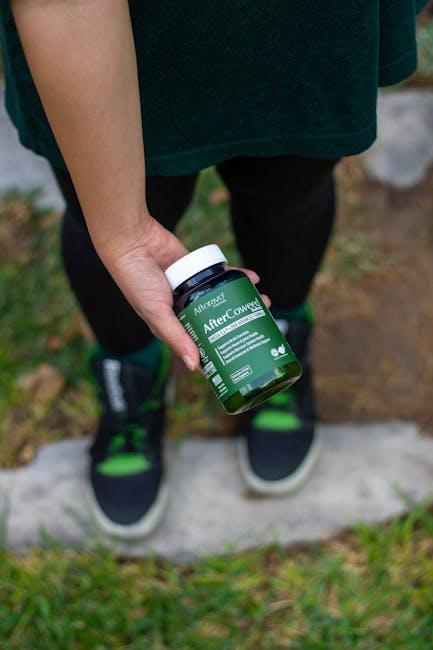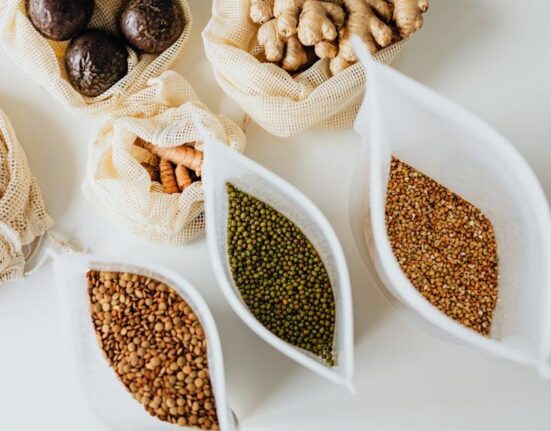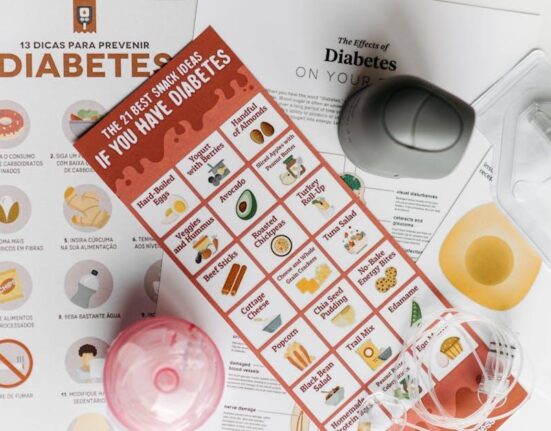In the quiet moments of daily life, a hidden battle often unfolds within—a battle marked by discomfort, unpredictability, and frustration. Chronic bloating, a condition that many endure in silence, can cast a shadow over even the simplest joys of eating and living. This is a story not just of struggle, but of transformation: a journey from persistent discomfort to renewed vitality and a healthy gut. Through the twists and turns of trial, discovery, and healing, this narrative explores how understanding and nurturing our digestive health can lead to profound change. Join us as we delve into the path from chronic bloating to a balanced, thriving gut—where wellness begins from within.
Table of Contents
- Understanding the Root Causes of Chronic Bloating
- Identifying Dietary Triggers and Gut Sensitivities
- Incorporating Probiotic and Prebiotic Foods for Gut Health
- Lifestyle Changes that Promote Digestive Wellness
- Tracking Progress and Knowing When to Seek Professional Help
- Q&A
- Wrapping Up

Understanding the Root Causes of Chronic Bloating
Chronic bloating often feels like an inexplicable enemy lurking within, but peeling back the layers reveals a complex interplay of factors driving this uncomfortable sensation. At the core, digestive inefficiencies such as improper digestion of certain foods or imbalanced gut bacteria can cause excess gas production. For example, fermentable carbohydrates that don’t fully break down can become fodder for gut microbes, resulting in bloating and discomfort. Additionally, lifestyle habits such as eating too quickly or chronic stress significantly influence gut function, triggering inflammation or slowing digestion.
Several triggers frequently emerge when exploring the roots of persistent bloating:
- Food intolerances: Lactose, gluten, and fructose are common culprits that sensitize the gut.
- Imbalance in gut microbiota: An overgrowth of certain bacteria or yeast disrupts harmony in digestion.
- Motility issues: Slow transit time can cause food to stagnate, encouraging gas buildup.
- Chronic inflammation: Conditions like irritable bowel syndrome (IBS) or low-grade inflammation can amplify bloating.
| Cause | Effect on Gut | Common Signs |
|---|---|---|
| Food Intolerance | Increased fermentation | Gas, cramps |
| Gut Dysbiosis | Microbial imbalance | Distension, irregular bowel |
| Motility Delay | Food stagnation | Fullness, bloating |
| Inflammation | Irritant release | Chronic discomfort |

Identifying Dietary Triggers and Gut Sensitivities
Understanding what foods cause discomfort in your digestive system is a crucial step toward relief. Many individuals live with unnoticed food sensitivities that trigger bloating, gas, and other unpleasant symptoms. Keeping a detailed food diary can reveal patterns between what you eat and how your body reacts. Here are common culprits often overlooked:
- Dairy products containing lactose
- Gluten-containing grains like wheat and barley
- High FODMAP foods such as onions and garlic
- Artificial sweeteners like sorbitol and xylitol
To simplify the process of tracking triggers, consider this quick reference table of common foods and their typical gut reactions:
| Food Group | Potential Sensitivity | Common Symptoms |
|---|---|---|
| Dairy | Lactose Intolerance | Bloating, diarrhea |
| Gluten | Gluten Sensitivity | Gas, abdominal pain |
| FODMAPs | Fermentable Carbs | Cramping, bloating |
| Sugar Alcohols | Artificial Sweeteners | Gas, diarrhea |
Once you identify these triggers, gradually eliminating or substituting them in your diet can make a transformative difference. Stay observant and patient, as your gut often takes time to heal and respond positively to these mindful changes.

Incorporating Probiotic and Prebiotic Foods for Gut Health
To nurture a thriving gut environment, it’s essential to embrace the dynamic duo of probiotics and prebiotics in your daily diet. Probiotics are live beneficial bacteria found in fermented foods that help restore balance to your digestive system, while prebiotics act as their fuel, feeding these good bacteria to flourish and support gut function. Incorporating foods like yogurt, kefir, sauerkraut, and kimchi can introduce diverse strains of friendly bacteria, strengthening your gut’s resilience against discomfort and bloating.
Meanwhile, prebiotic-rich foods such as garlic, onions, asparagus, and bananas provide the indigestible fibers these microbes love to ferment. Together, they create a nurturing environment where gut flora can thrive, enhancing digestion and reducing inflammation. Below is a simple guide to help you identify and enjoy these gut-friendly foods:
| Category | Examples | Benefits |
|---|---|---|
| Probiotic Foods | Yogurt, Kefir, Kimchi, Sauerkraut | Boost beneficial bacteria, improve digestion |
| Prebiotic Foods | Garlic, Onions, Asparagus, Bananas | Feed good bacteria, enhance gut environment |

Lifestyle Changes that Promote Digestive Wellness
Transforming your daily habits can have a profound impact on your digestive health. Incorporating simple yet effective changes such as mindful eating, which encourages savoring each bite and thorough chewing, helps to reduce the stress on your digestive system. Staying hydrated throughout the day with ample water intake is another pivotal factor, as it aids in breaking down food and maintaining smooth bowel movements. Additionally, regular physical activity not only boosts metabolism but also helps to keep the digestive tract functioning optimally.
Some key lifestyle modifications to embrace include:
- Consistent meal times: Aligning your eating schedule with your body’s natural rhythms enhances digestion.
- Limiting processed foods: Reducing intake of refined sugars and artificial additives can prevent inflammation and bloating.
- Stress management: Practices such as yoga or meditation support gut-brain harmony.
- Getting enough sleep: Quality rest promotes the repair and regeneration of the gut lining.
| Change | Benefit |
|---|---|
| Mindful Eating | Improves nutrient absorption |
| Hydration | Prevents constipation |
| Regular Exercise | Stimulates digestion |
| Stress Reduction | Balances gut bacteria |

Tracking Progress and Knowing When to Seek Professional Help
Tracking your journey from discomfort to relief is essential to ensure you’re on the right path. Keeping a detailed journal can illuminate patterns that might otherwise go unnoticed. Note your meals, symptom severity, sleep quality, and stress levels daily to create a comprehensive snapshot of your gut health. Utilize these insights to make informed adjustments, fostering gradual but meaningful improvement. Remember, celebrating small wins like fewer bloating episodes or improved digestion can boost motivation and help you maintain consistency.
Despite your best efforts, certain red flags signal the need to consult a healthcare professional. Be vigilant for symptoms such as:
- Persistent or severe pain: Intense discomfort that disrupts daily life.
- Unexplained weight loss: Sudden decrease that cannot be attributed to diet or exercise.
- Blood in stool or chronic diarrhea: Indicators of potential underlying conditions.
- Fatigue and nutritional deficiencies: Suggesting malabsorption or chronic inflammation.
When these symptoms arise, timely intervention can make all the difference. Partnering with a gastroenterologist or nutrition expert will provide personalized guidance and possibly necessary diagnostic tests to tailor your healing process. Your gut’s story is unique—knowing when to seek help ensures it has the best possible ending.
Q&A
Q&A: From Chronic Bloating to Healthy Gut: A Story
Q1: What inspired the story “From Chronic Bloating to Healthy Gut”?
A1: The story was inspired by the many individuals who silently suffer from digestive discomfort, especially chronic bloating, and the transformative journey they embark on to regain their gut health. It aims to shed light on the often overlooked struggles and the hopeful path toward wellness.
Q2: Who is the central figure in this gut health journey?
A2: The central figure is a relatable narrator who experiences persistent bloating and digestive issues. Through trial, learning, and persistence, they gradually uncover the habits, foods, and lifestyle changes that lead to a thriving, healthy gut.
Q3: What are some common causes of chronic bloating mentioned in the story?
A3: The story touches on common triggers such as imbalanced gut bacteria, food intolerances, overeating, stress, and lack of dietary fiber. It emphasizes that bloating is often a sign that the gut’s natural balance has been disrupted.
Q4: How does the narrative describe the shift toward gut health?
A4: The shift is depicted as a gradual, mindful process involving better nutrition choices, incorporating probiotics and prebiotics, mindful eating, regular physical activity, and managing stress. The story portrays this journey as one that requires patience and self-awareness.
Q5: Does the story offer practical advice for readers struggling with bloating?
A5: Yes, woven into the narrative are practical tips—such as keeping a food diary to identify triggers, integrating fermented foods like yogurt and kimchi, staying hydrated, and seeking medical advice when necessary. It encourages readers to listen to their bodies and seek personalized solutions.
Q6: What is the overall message the story wants to convey?
A6: The overarching message is one of hope and empowerment: that chronic bloating, while uncomfortable and frustrating, is not a life sentence. With intentional efforts, education, and care, reclaiming gut health is possible, leading to improved well-being and daily vitality.
Q7: How does the tone of the story help readers engage with the topic?
A7: The neutral yet creative tone invites readers into a personal narrative without judgment or alarm. It balances scientific insights with empathy, making the topic accessible and encouraging, rather than overwhelming.
Q8: Why is gut health important beyond just avoiding bloating?
A8: The story highlights that gut health impacts digestion, immunity, mental clarity, and overall energy levels. A healthy gut supports nutrient absorption and reduces inflammation, underscoring its central role in holistic wellness.
Q9: Can this story be relevant to people with different digestive issues?
A9: Absolutely. While focused on bloating, the themes of balance, mindful eating, and lifestyle adjustments resonate with individuals facing various digestive challenges, encouraging them to explore and nurture their own gut health journeys.
Q10: What final takeaway does the story leave for its readers?
A10: The final takeaway is a reaffirmation that healing is a journey unique to each person. With awareness and care, the discomfort of chronic bloating can give way to the comfort and vitality of a healthy gut—setting the stage for a fuller, more vibrant life.
Wrapping Up
In the journey from chronic bloating to a healthy gut, we uncover more than just relief from discomfort; we discover the intricate dialogue between our bodies and the foods we choose, the habits we form, and the care we extend to ourselves. This story is a reminder that healing is rarely linear, but with patience, insight, and a willingness to listen to our inner rhythms, a balanced gut can become not just a goal, but a lasting reality. Let this journey inspire you to tune in, explore, and embrace the path toward your own digestive wellness.














Leave feedback about this